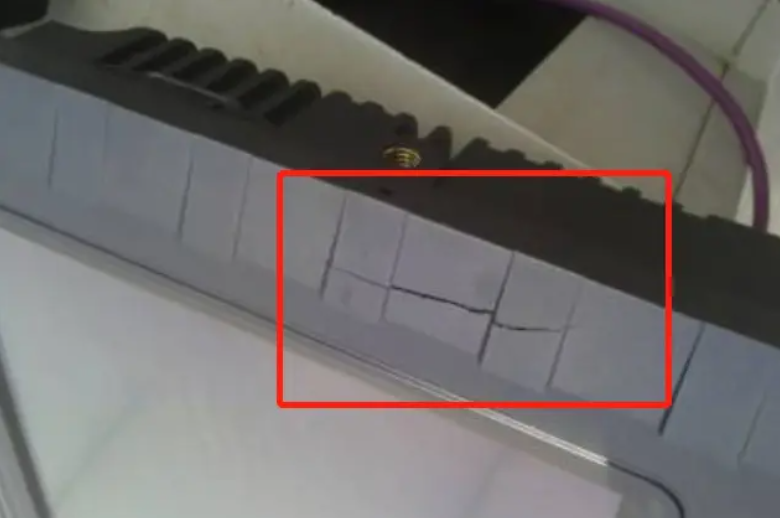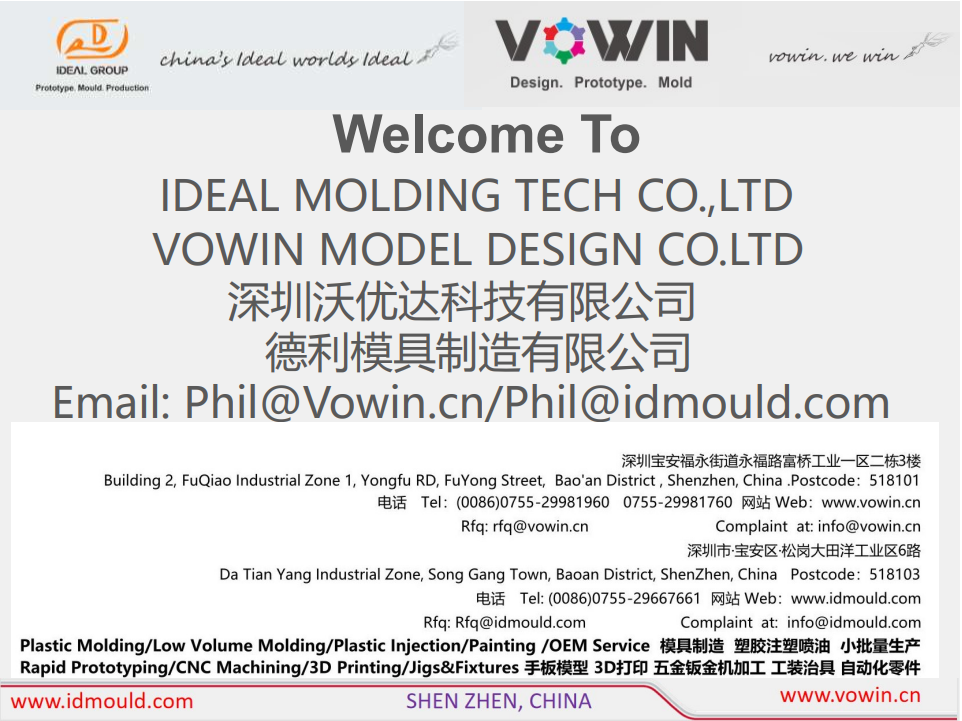Resources
What should I do about cracked injection molded plastic products?
Release time:2023-09-26
What should I do about cracked injection molded plastic products?
Analysis of Cracking Causes
Different causes of cracking will lead to different types of cracking. If classified according to the time of cracking, the phenomenon of cracking of plastic products usually has two situations:
① demolding cracking, plastic products from the mold out or in the process of machine processing cracking, the causes and consequences of this cracking is relatively easy to predict;
② application cracking, plastic products after a period of time or the use of the process of cracking, this cracking is often difficult to predict, and the consequences may be devastating.
The following is a brief description of the causes of cracking and suggestions for improvement, mainly from the perspectives of plastic material selection and environmental stress, in combination with the above two types of cracking.
1. Analysis of the causes of cracking due to material type and suggestions for improvement
The following two cases, from the background of material selection and processing problems to analyze the possible impact of material selection on product cracking.
(1) Round hole connector (on behalf of molded hollow products)
Has been in the production of molding small round hole, the choice of polyphenylene sulfide PPS GF30 / GF40 this material, the device did not appear any cracking phenomenon. In the development of a series of connectors with large round apertures, the customer again chose the PPS GF30/GF40 material from a number of well-known manufacturers around the world. The result of the processing is a very serious product cracking, some belong to the demolding cracking, some belong to the application of cracking, and different manufacturers with the same type of content of the PPS are products cracking problem. The customer and the material manufacturer initially suspected that the impact strength of the plastic was insufficient, but at the same time found that the impact strength was lower than that of PPS GF30/GF40, but PA6 and PC materials did not crack. After selecting the high-impact PPS GF40 material provided by some well-known manufacturers, the cracking problem still existed.
Based on the information provided by the customer, we analyzed that it was most likely due to the fact that the core of the mold for molding plastic round holes was made of carbide material. Metallic materials have strong thermal conductivity and heat dissipation ability, while the general plastic materials have weak heat dissipation ability, metal materials and plastics extrusion will inevitably produce a large difference in shrinkage, the temperature of different parts of the plastic product is also a large difference, for the ductility is not good (elongation at break is small) of the plastic, there is no doubt that the phenomenon of fracture will occur.
(2) Hollow pipe products (on behalf of plastic profile machining)
A customer changed the previously used PEEK material to PEEK GF30 and PPS GF40 to improve the strength of the product. Since the product was in the shape of a long, hollow tube (wall thickness of 5mm), PEEK GF30 and PPS GF40 rods (Φ95) were used for machining. As a result of the machining, there were some cracks in the product, but they were basically applied cracks. The fracture point is the transition from thick wall to thin wall. However, when pure PEEK, PP, PC, PEI, etc. are used for machining, no cracking occurs. According to the above information, we initially speculate that the plastic chips are easy to localized warming (plastic heat transfer is slow), which leads to more residual stress; at the same time, the product pipe diameter is large, the plastic has the characteristics of post-shrinkage imbalance.
Comprehensive the above two cases can be seen in the product selection, should fully consider the plastic material molding, component structure, heat transfer and other practical process operation; for some hollow structure, should fully consider the wall thickness, hollow size is too small, etc., such as thin-walled, hollow core parts should try to use a good ductility (elongation at break), good heat transfer of plastic, and the selection of plastic rods processed into a Pipe should be fully considered when the plastic heat balance, as far as possible to choose a good ductility of plastic rods, for some ductility is not good plastic pipe, as far as possible to avoid the selection of rods processed into tubes (general factory tubes have been residual stress heat treatment). For some bad ductility of plastic, the use of plastic tubing and plastic rods are not the same effect.
2. Analysis of the causes of cracking due to environmental stress and suggestions for improvement
Raw material for GP-22 type ABS + high concentration of black masterbatch plastic parts from the mold out of the intact, placed in the air for 2 to 3 days, part of the parts in the copper inserts around the vertical cracks, and some have even been completely cracked. Because the plastic parts in the molding process did not appear any problem, indicating that the problem does not lie in the molding equipment and process, after a preliminary analysis to confirm that the problem is mainly caused by the environmental stress cracking, caused by environmental stress cracking may be due to the following aspects.
(1) Raw materials
① Raw materials mixed with other impurities or mixed with inappropriate or excessive solvents or other additives.
Environmental stress cracking is a unique phenomenon of polyolefin plastics, which refers to the existence of stress when the product, in contact with certain active media, there will be brittle cracks, which may eventually lead to product destruction. These active substances can be detergents, soaps, water, oil, acids, alkalis, salts and organic solvents that do not have a significant swelling effect on the material. The necessary conditions for environmental stress cracking are the presence of stress in the specimen or part, and the presence of some kind of stress concentration factors such as notches, surface scratches and so on. ABS contains polyolefin components, and raw materials containing impurities or solvents indirectly provide these active substances, when the ABS plastic parts in the storage process due to a variety of incidental factors to the surface of the gap or scratches, it will lead to cracking.
Environmental stress cracking is a unique phenomenon of polyolefin plastics, which refers to the existence of stress when the product, in contact with certain active media, there will be brittle cracks, which may eventually lead to product destruction. These active substances can be detergents, soaps, water, oil, acids, alkalis, salts and organic solvents that do not have a significant swelling effect on the material. The necessary conditions for environmental stress cracking are the presence of stress in the specimen or part, and the presence of some kind of stress concentration factors such as notches, surface scratches and so on. ABS contains polyolefin components, and raw materials containing impurities or solvents indirectly provide these active substances, when the ABS plastic parts in the storage process due to a variety of incidental factors to the surface of the gap or scratches, it will lead to cracking.
② Some plastics such as ABS, etc., in the moisture condition will be heated with water vapor catalytic cracking reaction occurs, so that the parts of the occurrence of large strains and thus cracking.
③ Plastic in the barrel heating time is too long, will also promote the production of brittle cracks.
(2) Product design


Like polystyrene and plastics containing this component should be used as little as possible metal inserts, because these plastics are brittle hot and cold specific capacity. If in order to assembly and strength requirements must be added inserts, such as inserts made of copper metal, and copper metal inserts cooled when the size change with the plastic ABS thermal contraction value of the difference is very large.
① Replacement of inserts used materials, so that the inserts and ABS products should be as close as possible to the coefficient of linear expansion;
② Increase the inserts of the sharp corner of the rounded parts, rounded corners are too small may cause product stress concentration, resulting in product cracking;
③ Increase the thickness of the plastic layer around the insert.
(3) insert preheating
In the plastic products with inserts, the inserts around the easy cracks or lead to a decline in product strength, which is caused by the thermal properties of metal inserts and plastic and shrinkage caused by large differences. Therefore, in the design of parts, should increase the wall thickness around the inserts, to overcome this difficulty, preheating the metal inserts before molding is also an effective measure. Because after preheating can reduce the temperature difference between the melt and inserts, in the molding can make the inserts around the melt cooling slower, more uniform contraction, a certain amount of hot material to compensate for the role of shrinkage, can prevent excessive internal stress around the inserts.
(4) annealing treatment
As the plastic in the cylinder plasticization is not uniform or in the mold cavity cooling rate is different, so often produce uneven crystallization, orientation and contraction, resulting in products with internal stress, which is more prominent in the production of thick-walled or with metal inserts products. There are internal stress in the storage and use of the parts will often appear in the mechanical properties of the decline in optical properties deteriorate, the surface of the silver lines, and even deformation and cracking. The solution to these problems in production is to anneal the parts.
If you have mold customization needs, welcome to contact us!

Posts by Topic
Recent Posts
- What do we need to pay attention to the plastic mold machining process and machining procedures?
- What kinds of plastic mold materials?
- What is the process of mold manufacturing?
- What should be paid attention to the polishing of injection molds?
- What is easy to ignore when maintaining and overhauling injection molds?
- What are the 6 systems of plastic molds?
- What are the methods of strengthening the surface of injection molds?
- What are the methods of insulation for injection molds?
- How to solve the problem of injection mold release difficulty?
- How can we increase the brightness of ABS injection molded parts?














